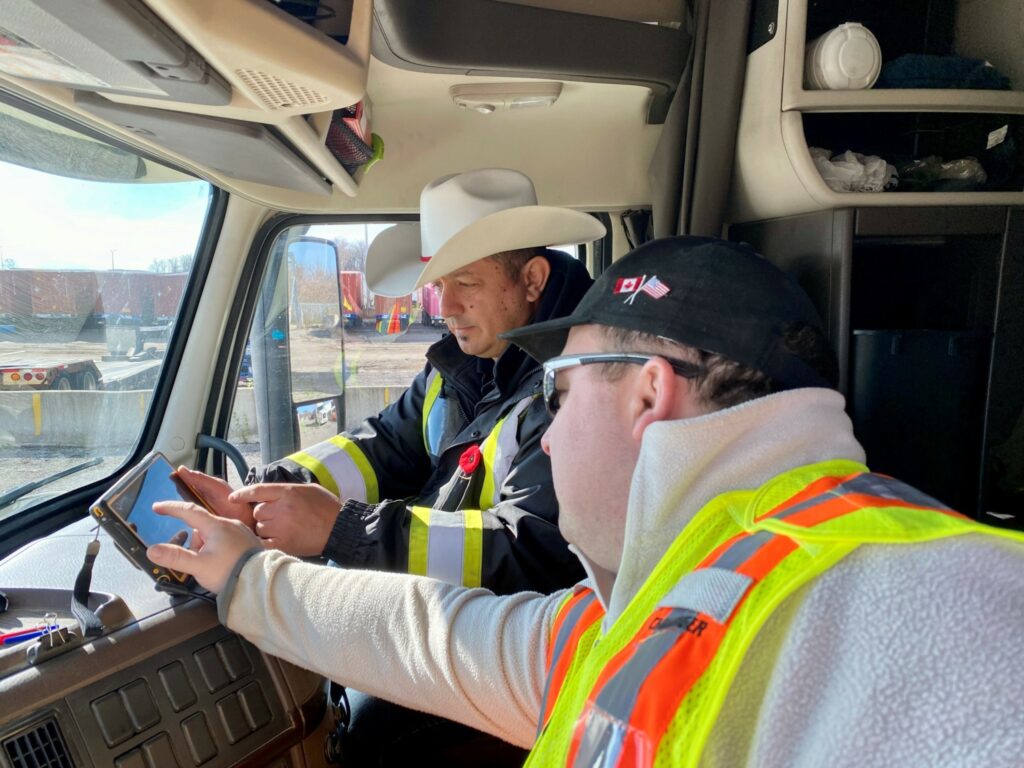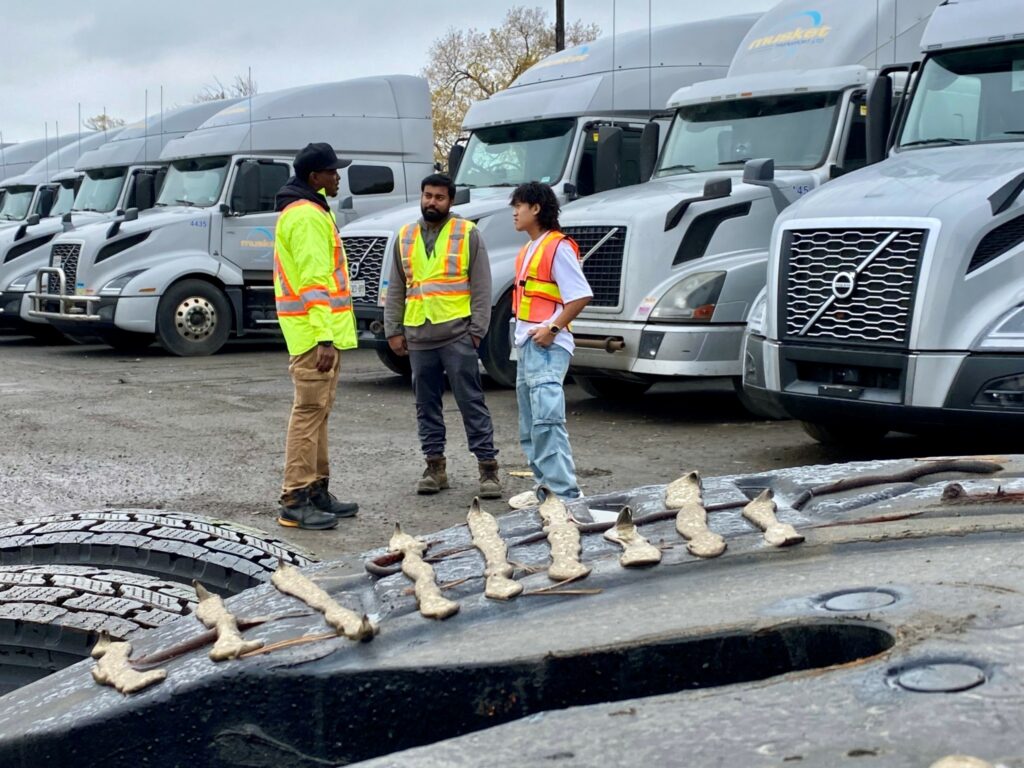Carriers reap rewards from their driving schools, finishing programs
Carriers that have their own driving schools and finishing programs that provide high-level training are benefiting by rolling out professional drivers who can safely and confidently operate their equipment and haul freight.
The schools and finishing programs, besides providing a steady pipeline of trained talent, also improve safety records and boost driver retention numbers, company officials say.
Challenger Motor Freight utilizes its Challenger Transportation Training Academy in Cambridge, Ont., and a finishing program to hire new and inexperienced drivers for its fleet.

“They are adopting to our culture at the academy, working in a live trucking yard, and learning our way of doing things,” says Steve Newton, director of safety and driver development. The driving school uses concepts from the finishing program during training.
MELT (mandatory entry-level training) is the minimum level of training to obtain a licence and it is not enough, says Keith Wood, training center supervisor, Kriska Transportation Group, based in Mississauga, Ont., where a finishing program is offered for unexperienced truckers. “I can’t tell you everything I know about driving a truck in 103.5 hours,” he says.
Training with loaded trailers
Many of Mississauga, Ont.-based Musket Transport’s future drivers learn the ropes at its own school – Commercial Heavy Equipment Training (CHET). They train in Musket’s live yard and focus on safety from Day 1 as they back trailers in a busy environment.
“If there is a job available, our students get first choice,” says Sandra Graham, CHET operations manager, who added that students haul loaded trailers during training, unlike at most schools.
All CHET students are trained on Musket vehicles with manual transmissions. “We don’t teach our students to pass the ministry test, we train them to be professional truck drivers,” says instructor Nasir Ali.

With a greying driver population, fleets are always on the lookout for experienced younger drivers.
“We can’t keep hiring everybody else’s experienced drivers. It is self-defeating. The industry can’t cannibalize itself. The pool is going to dry up,” says Kriska’s Wood. “It is hard to attract new people. We invest in and develop our drivers to ensure that they are up to our standards.”
This year, as freight volumes dropped, so did the demand for drivers. But it was a different story last year as fleets were clamoring for drivers.
Valuable insights from trainers
Like many carriers, New Way Trucking couldn’t find drivers in 2022. The Calgary, Alta.-based company developed a training program to hire newly-licensed drivers. “There are risks involved in hiring new drivers, and we started this program to mitigate those risks,” says Dilraj Brar, the company’s assistant CEO.
Carriers use their finishing programs to provide real-life experiences, valuable insights from driver-trainers and critical knowledge that is gained through practice.

At Musket, a freshly licensed or inexperienced driver spends several weeks in a truck with a mentor, says driver manager Josh Potts. They ride with and observe the mentor for the first week. By week three, the trainee does all the driving, while the mentor provides guidance.
In the fourth week, the trainee drives their own truck with a load as they follow the mentor down the road.
Backing and cornering
New drivers and those with less than six months of experience hired by Challenger must undergo the finishing program. This consist of three weeks in the yard, two weeks of city driving and two weeks of highway driving. For the city and highway portion, the instructor sits beside the trainee and there is no team driving.
In the first three weeks of yard training the focus is on backing. If they graduate, they practice how to make corners on city streets for a week. The third week focuses on building observation skills, trip planning and mapping. Trainees are taught to reach their destination – the dock at the back, not the front door.

“The program is not time-based, it is skill-based,” Newton says, adding that if a driver needs extra training, he or she gets it.
Brett Nymeyer, Challenger’s driver training manager says experience can’t be replaced. If something goes wrong with a new driver and panic sets in, the person reverts to car-driving habits. “We put them through challenges. We create a scenario where a road is closed and they have to trip plan around it,” he says.
Building driving stamina
New Way Trucking conducts a three-month program for newly licensed drivers. For the first month, trainee and mentor travel on dedicated routes where the new driver drives all the miles. One route takes them from the Calgary terminal to Regina, where they spend the night and return to Calgary the next day.
In the second month as the trainee builds driving stamina, they travel as a super solo from Calgary to Winnipeg. The trainee drives 12 hours, and the mentor finishes the run. A trip lasts between 13 to 14 hours.
For the third month, they drive as a team across Canada, before the trainee finally heads out alone.
Kriska’s finishing program lasts a minimum of six weeks, beginning with four days of classroom sessions. Besides safety, trip planning, lifestyle and other topics, trainees also get a course on winter and what to expect.
When the trainee moves into the truck with an instructor while moving cross-border freight, they are not a team.
For the first few days, the trainer does most of the driving and gradually the trainee’s drive time is increased. By the third week the trainee does all the coupling and uncoupling of trailers, backing into docks at customers’ facilities and at truck stops, and completes paperwork. During the last week the trainer observes and advises. There are weekly evaluations and a road test at the end of six weeks by another instructor.
Shadowing an experienced driver
Wood says the trainees are then paired with an experienced driver and they shadow them with loads. Dispatch provides more time and flexibility with freight for a few weeks.
Challenger’s Newton notes that trainees who graduate from the finishing program typically perform at the level of a driver with one year’s experience. Accidents have been reduced, especially during backing and cornering.
New Way Trucking’s Brar agrees, saying the finishing program has been a factor in pushing down accident rates.
Despite the many benefits, carriers must also deal with challenges that arise.
Sometimes a fleet does not communicate its needs with the driving school, says Sophia Sniegowski Begidzhanov, Musket/CHET corporate communications officer. Regular meetings and consultations help provide solutions.
Wood says the limitation isn’t the number of people that can be brought in but in the number of trainers that can work with them. Brar added that there is a challenge in finding mentors as not everyone is willing to take up the role.
Carriers spend time and money training newly minted truck drivers. Wood admits it is expensive, but says the training is priceless. If a driver backs into the front end of another truck, the hood and headlight assembly may need replacement.
“The one time you didn’t do that you just paid for the guy’s training. You can’t put a price on the accident he didn’t have, but there is one,” Wood says.
Have your say
This is a moderated forum. Comments will no longer be published unless they are accompanied by a first and last name and a verifiable email address. (Today's Trucking will not publish or share the email address.) Profane language and content deemed to be libelous, racist, or threatening in nature will not be published under any circumstances.

This needs to be the industry standard across all of Canada for hires and training of truck drivers. I think all truck drivers should have spend at least 3 months with a more experienced driver and at least 1 month of that with a manual transmission so they can handle snow and use chains. It is much better to train than have people get hurt.